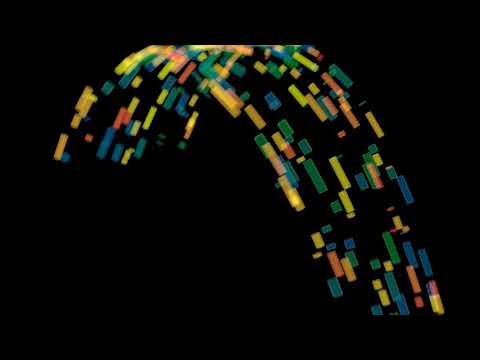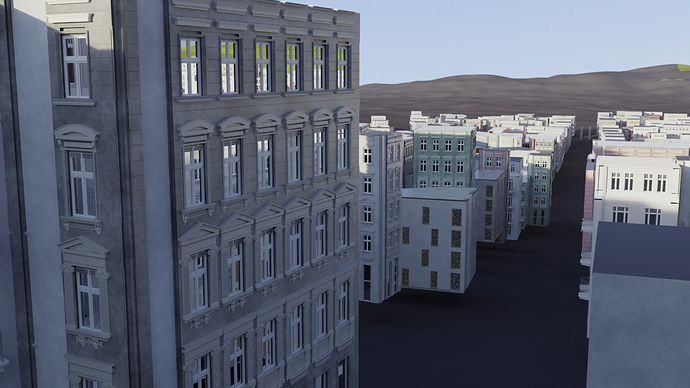Their are a lot of 3D artists on the market and it’s not easy to stand out. But you chose a special tool, one that you can modify. Learn to create your own Blender to fasten your workflow with faster rendering, new modifiers, streamlined UI’s, cool patches you wanted for month/years in Blender, all that on top of the latest and greatest official Blender or the very stable 2.7x Branch :). It is a course available in English, (French and German will follow), for Windows, Linux and Mac. It’s meant for everybody, with or without any experience with code.
You can get it now on gumroad or Blendermarket as standard version for a reduced price or at the original price with the Cycles speedups and the new AI denoiser.
https://gumroad.com/l/ecycle/kn67150
Create and modify environments very fast thanks to a new modifier:

These variations of shells are made of 1 mesh with only 4 edges thanks to the new modifier you will learn to add:
If you have a CUDA card, you can expect those speedups for rendering at the end of the course and you will know how it works, with some tips to get it even faster:

What you will learn:
- How to create an easy to use developer environment on different platforms/OS.
- Get Blender’s source code and it’s libraries to compile a full version of Blender.
- learn to use Git and Svn to create your own branches, create your own commits, grab modifications made by others, etc…
- learn to use Arcanist to get and upload patches to/from Phabricator (patches from developer.blender.org)
- make your own mix by using patches from other developers and/or by importing modifications from other branches
- learn to simplify Cycles’s use by simplifying it’s UI and automatize some decisions.
- make Blender more parametric and non-destructive by learning how to add new modifiers.
- learn how to regularly update your code base with the latest advances made in master, with your own modifications on top.
Plus in the extended version:
- some easy examples of how to optimize cycles for all devices (10 to 20% faster on OpenCL, 1.5x to 2x faster on CUDA by modifying the code)
- Learn to add the new AI denoiser from Intel/Stefan Werner in the compositor.
What you will get:
- Hours of videos all in English (French and German coming)
- All the diffs for each modifications you will learn to make yourself in the course (for 2.7x and 2.8x)
- A recap of all the links (to the tools, code, patches, etc.) you need for the course, plus some extras
- A list of the most used commands for quick reference.
Plus in the extended version:
- The modified version of Blender with all the modifications of the course in binary form for Windows and Linux and in source form.
Summary of the course:
1) Introduction - The Blender source code organization explained:
a) Blender’s code and it’s libraries
b) The Concurrent Version Systems used
c) The compiling tool chains on different OSs
2) How to create a development environment
a) Choose a text editor
b) Install and configure all needed tools
3) Your first personalized flavour of Blender: the power of the community
a) Build an official version of Blender.
b) Explore branches, learn how to use them.
c) Create your own branch, pick features from others, make your own mix without writing code yourself
d) Use Arcanist and Phabricator to add patches from developer.blender.org
e) Learn to fix common errors.
4) Write your own modifications:
a) Add a modifier to fasten your workflow
b) Customize Cycles’s UI
c) Keep up to date, benefit from the best of both worlds
d) Optimize Cycles for GPUs and add auto tile size to save you time as a user (extended version)
e) Upload your changes
5) Learn to learn - How to get started in a new area of the code:
a) Find what to modify
b) Adapting to new part of code base
c) Playing with code
Bonuses:
- add a remove double modifier
- updated dithered sobol patch (extended version)
- updated simple OpenVDB Remesher patch
- add the new OpenImageDenoise Intel Denoiser as a node and how to add new libraries with cmake (extended version)
- Further readings to go to the next step
What the artists say
Johannes - 3D Artists
I started out as a 3D artist with decent (for an artist) Python experience.
While Python is fine it does have its limitations and some things are simply impossible to do with python because Blender does not let you access certain things with Python. Hence I allways wanted to learn how to modifiy Blenders source code.
However, I started this venture into coding several times but allways failed due to not finding the necessary information and not knowing what to look for.
This course is really something I have been looking for for years and I am amazed how short it took to get really cool results. The course is worth every cent. 10/10 would buy again.
Two of his results after following the course, working on the particles code:
A particle system to generate towns:
You’re teaching me everything that I need to know in the easiest way possible way to understand over in your Blender course and it is really fun. The Cycles speedup stuff is awesome and pretty damn cool that you taught us to do it ourselves.
I don’t know how to code for spit but after watching the first weeks course I was building my own Blender in a few minutes. Now anytime I get an idea, I can quickly go code it and run a build.
It is awesome and amazing to see your own code in the Blender ui then have it actually work. That is a great feeling.
https://blenderartists.org/t/e-cycles-faster-cuda-rendering/1139717/223
FAQ:
Q: Which version of Blender is in the course?
A: Both 2.79 and 2.8, you can decide what you code on.
Q: I use the distribution XXX of Linux, will it work for me?
A: Libraries version are tested on Ubuntu. It’s highly recommended to learn on Ubuntu/Linux Mint. You can then do portable builds that you can run on your beloved distribution.
Q: Will I be a professional C, C++, CUDA, OpenCL, and Python programmer and know everything about Blender at the end?
This course is made mainly for artists who want to be able to forge their own tool to have a better workflow. You will learn enough to code other modifier by yourself, tweak Cycles further to have optimal performance on your GPU and benefit from many patches/branch available in the future. Each programming language and each part of Blender could be a course for itself. The goal of this course is to make managing C/C++ patches nearly as easy as installing python addons, learn you to find where to look in the code depending on what you want to add and where to find solutions, help you understand code, show you you can modify Blender to get you started with coding using some simple yet powerful examples.
Q: How stable are the builds?
A: As stable as the buildbots. The new Cycles features and speed-ups are well tested in real use cases since half a year. It was tested on a 1080Ti and a Vega 64 with drivers from this summer. If you experience problems, which don’t happen on Buildbot, you can report it here, I’ll try to fix them and make it part of the course.
*the builds are offered as is, without any warranty. Blender 2.8x is still very unstable, use it at your own risk. Only available in the extended version.





